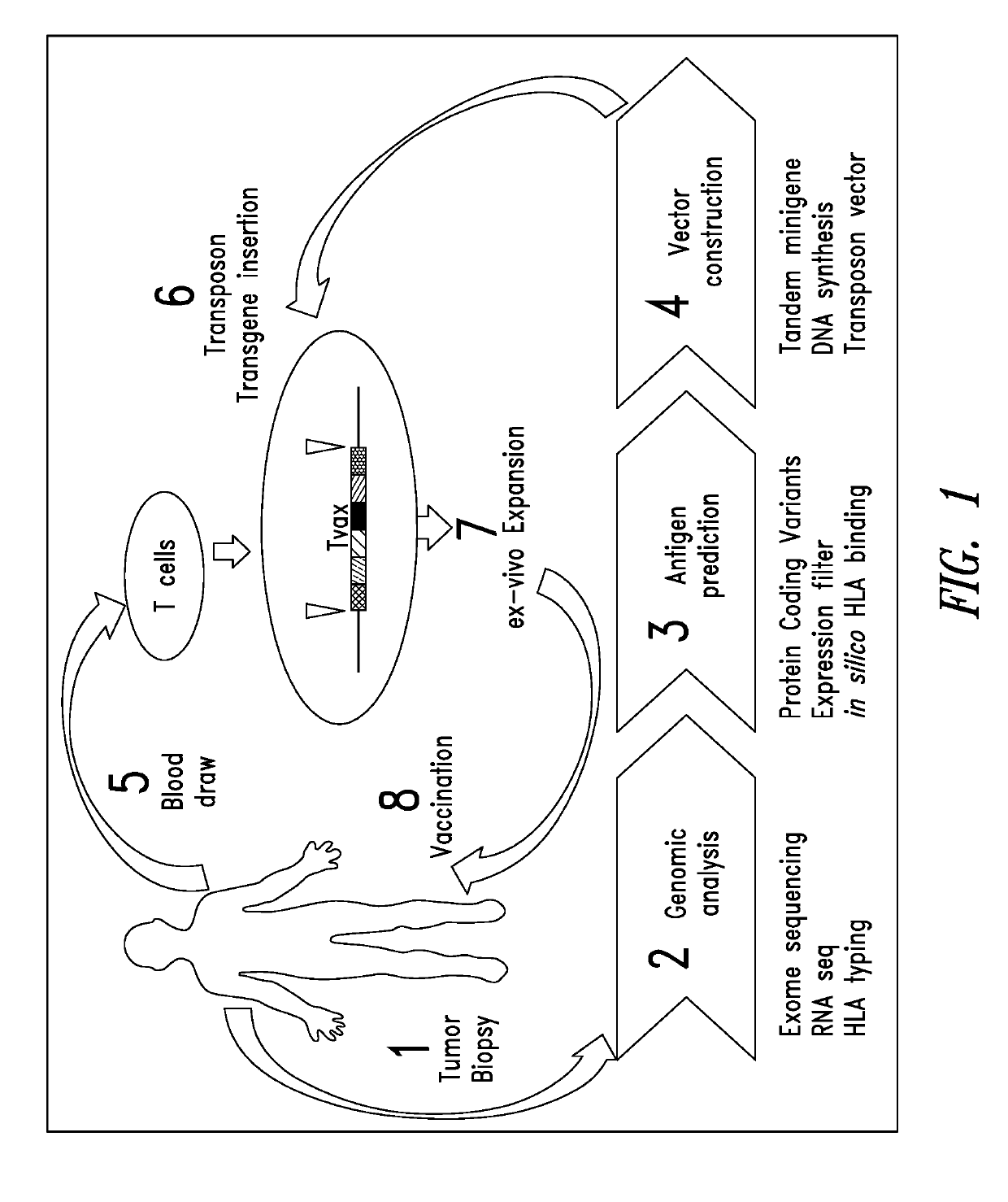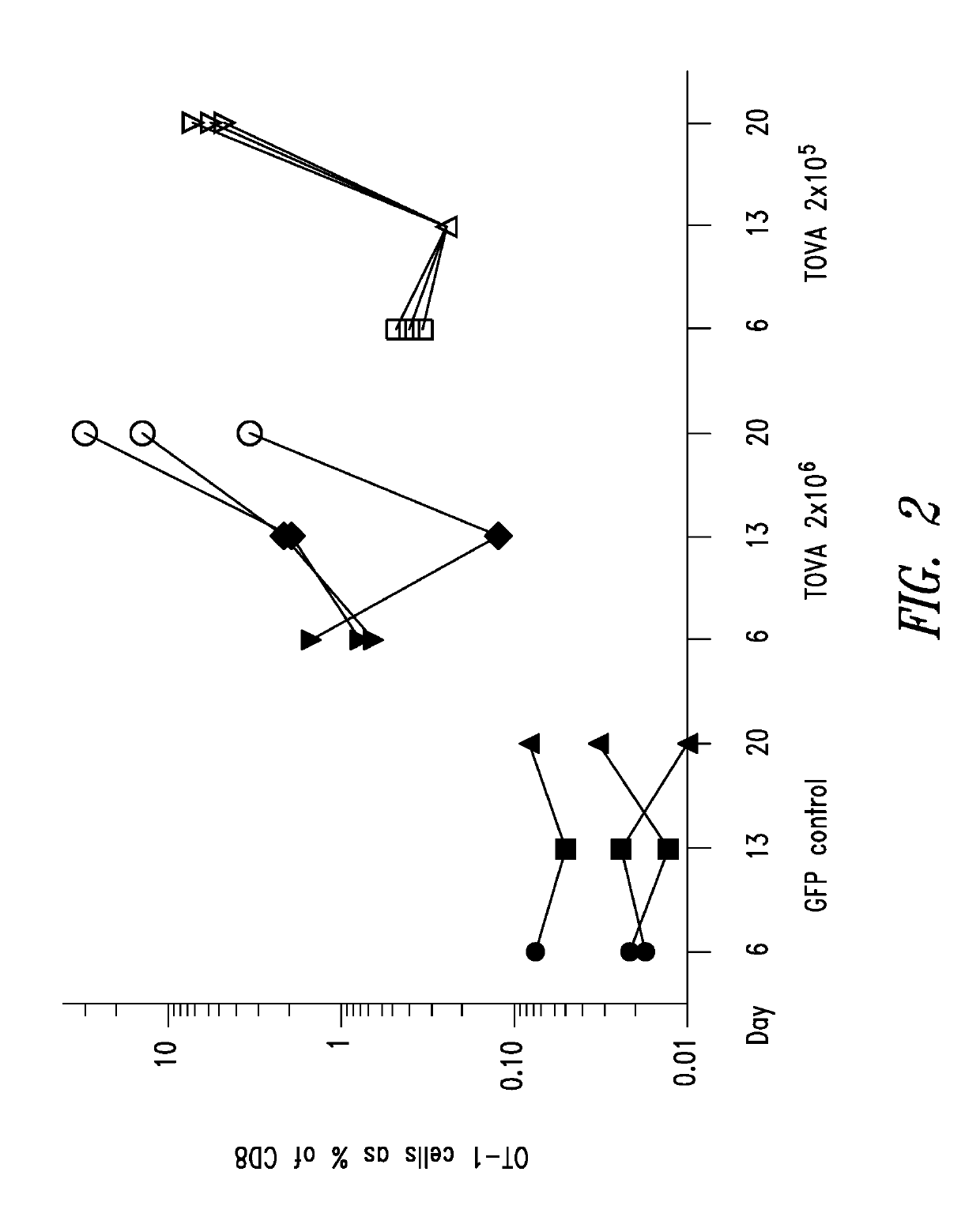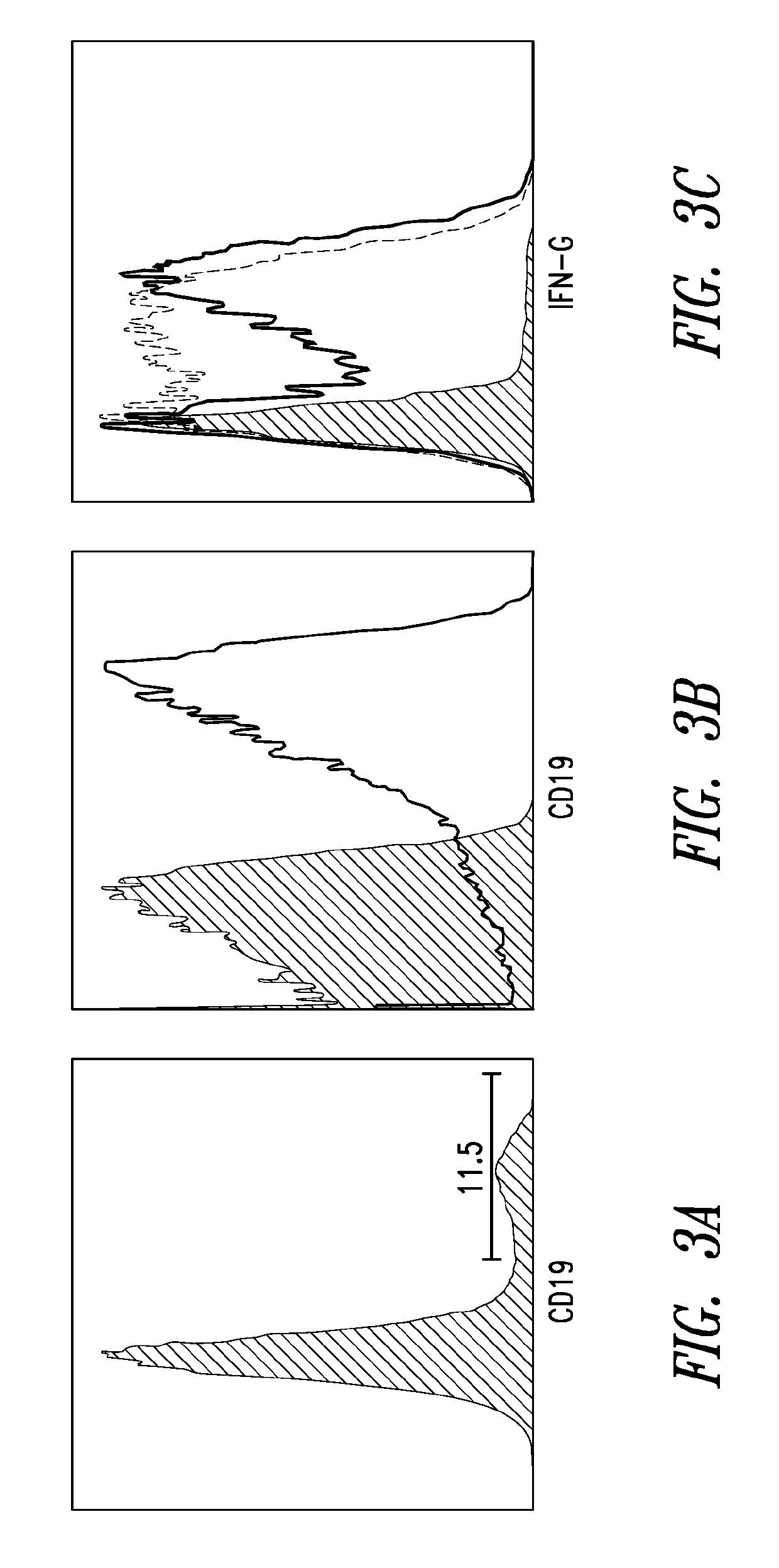Cell-based neoantigen vaccines and uses thereof
a neoantigen and cell-based technology, applied in the field of cell-based neoantigen vaccines, can solve the problems of inability to reproduce the strategy of exploiting the neoantigen repertoire in an individual's tumor to elicit broad-directed responses, and the majority of cancer patients do not achieve durable immune responses
- Summary
- Abstract
- Description
- Claims
- Application Information
AI Technical Summary
Benefits of technology
Problems solved by technology
Method used
Image
Examples
example 1
T Cells Expressing an Exogenous Antigen can Prime and Boost Responses to the Antigen In Vivo
[0151]A mouse model for investigating vaccination with autologous T cells genetically engineered to express candidate neoantigens (“TVAX”) was developed. The model can be used to study the mechanisms of TVAX action and to evaluate strategies for augmenting vaccine immunity. Ovalbumin (“OVA”) was used as a model antigen because reagents are readily available to quantify OVA-specific T cells, and OVA-expressing tumors are widely used to investigate immune mechanisms of tumor eradication (Dranoff, Nat. Rev. Immunol. 12: 61, 2012). To determine whether murine T cells transduced to express OVA would be immunogenic, wild-type B6 mice (The Jackson Laboratory, USA) were seeded with a small number of CD45.1 congenically marked naïve OVA-specific OT-1 CD8+ T cells and then vaccinated with one of two dose levels of wild-type T cells expressing full-length OVA (referred to herein as “TOVA” cells), or con...
example 2
Murine Model for Developing a T Cell-Based Vaccine
[0153]Murine models, such as the TOVA model in Example 1, may be used to elucidate mechanisms underlying the effects of TVAX, develop T cell-based vaccine regimens, and identify additional genetic modifications that potentially enhance the ability of T cells to elicit immune responses to tumor-associated antigens. Examples 3-8 describe a series of experiments using the TOVA mouse model. The following materials and methods were used.
Mice
[0154]All mouse experiments were performed in 6-week-old male C57BL / 6 mice as described above in Example 1. In some experiments, T cell donors for constructing the vaccine were obtained from B6 background mice that express chicken ovalbumin under the control of the beta actin promoter (The Jackson Laboratory). OT-I mice transgenic for a TCR specific for the ovalbumin SIINFEKL epitope (used herein as a model neoantigen) were crossed with CD45.1 mice (Both obtained from The Jackson Laboratory) to make mi...
example 3
Expression of Immunogenicity Enhancers Improves TVAX Immune Response
[0160]Without wishing to by bound by theory, TVAX cells of the present disclosure may localize and concentrate neoantigen presentation in, e.g., secondary lymphoid tissues and tumor sites. T cell-based vaccines presenting model TAAs had previously showed some efficacy in a murine melanoma model, but a large number of pre-existing antigen-specific T cells was required for this effect. We investigated whether Tvax cells may be modified to increase their immunogenicity and thereby overcome this requirement. In this experiment, mice were injected with 500 transgenic donor CD45.1+ / + TCROT-1+ / − CD8+ T cells. At day +1 following injection, the mice were administered a T-cell vaccine (2×105 TOVA cells). Three groups of the TOVA cells further expressed a membrane-tethered IL-12, secreted GM-CSF, or both. Mice were then bled at day +7 and T cells were stained for CD45.1. FIG. 5A. Data from this experiment is shown in FIG. 5B....
PUM
| Property | Measurement | Unit |
|---|---|---|
| Volume | aaaaa | aaaaa |
| Length | aaaaa | aaaaa |
| Immunogenicity | aaaaa | aaaaa |
Abstract
Description
Claims
Application Information
 Login to view more
Login to view more - R&D Engineer
- R&D Manager
- IP Professional
- Industry Leading Data Capabilities
- Powerful AI technology
- Patent DNA Extraction
Browse by: Latest US Patents, China's latest patents, Technical Efficacy Thesaurus, Application Domain, Technology Topic.
© 2024 PatSnap. All rights reserved.Legal|Privacy policy|Modern Slavery Act Transparency Statement|Sitemap



